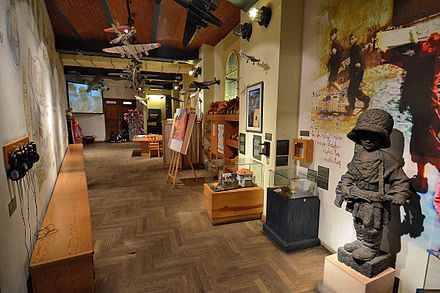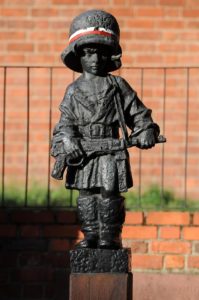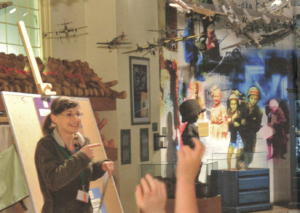Remembering the Children of War
By Leanne Rivera
During the Second World War, countless children were affected by brutal violence. They endured physical suffering, danger, catastrophe, exploitation, and loss. A multitude of children tried to flee but couldn’t; some witnessed a loved one’s death, and sadly enough, others were forced to participate in the violence that surrounded them. Before coming on this trip, I believed I had a decent comprehension of what had happened during the Nazi and Soviet occupations of Central Europe. However, I soon realized that we scarcely receive a sense of the actual reality of the fates of the children during the war. In my past understanding, the realm of war concerned exclusively adults. We automatically saw them as victims, which they were but we focus so much on the perpetrators, that we subsequently ignore the rest of these children’s stories because we put so much emphasis on feeling appalled about the situations that they endured. Consequently, we frequently fail to notice the children who faced highly challenging experiences. Based on my observations, almost every World War II or Holocaust Museum we visited had little to no representation of children. It was different in the Warsaw Rising Museum where I identified a more focused attempt to honor children and their contributions to the war effort.
Upon entering the Warsaw Uprising Museum, I noticed a door to the right leading to the “Room of the Little Insurgent.” There you will find a replicated monument of a child dressed as an insurgent welcoming you to a room full of archives showcasing the situation of children during time of the Warsaw Uprising in 1944. As you look around the room, you catch sight of drawings and paintings on the wall; you see tanks and bombs and a mural of child insurgents smiling while dressed in military attire or simply going about their day. Moving through the room, you notice glass cases exhibiting everything from personal letters to clothing. Looking up to the ceiling, you see an overwhelming number of fighter jets above your head.
From the curator’s manual, the room was said to be created for the younger museum-goers, as it is used for a classroom during the weekday, where usually kindergarten class visitors can learn about the war and the uprising, or just spend time in a playroom involved in fun educational activities. The room attempts to shine the light on children and their emotions while only briefly touching on their contributions. I found this room to be highly intriguing, as it explored such inspiring, complex, and what I would say quite troubling depictions of childhood during the war. In the room children can play with puzzles, board games and dollhouses – all copies of toys that children their age would use to play with during the war. The room also contains puppets and a puppet theater, a form of entertainment popular in the period of the war.
Exploring the room left me on a cliffhanger without clear conclusions about children’s experiences during the war and after. There seemed to be so much more to consider than children just as heroes during the uprising. What was the actual intent of the room? Why were these children smiling in the context of a war? Did this museum want to censor the room for younger museum goers, which are the intended audience? We know from historians about the harsh experiences of children during the uprising. In his book Bloodlands, by Timothy Snyder, he writes how the Germans soldiers would use “women and children as human shields.” Which in the reality of the fighting city was ruthless and demeaning. Understandably, the curator’s choice to abridge some details is crucial because they did not desire younger viewers to be traumatized. However, this begs the question of whether the area should have been designed from the beginning with the younger audience in mind; perhaps it should have just been a conventional museum room displaying the actual history of the experience of children in war and the roles they played in the uprising, not just a “safe space” and a playroom. In some ways, the space is misleading. Leaving the room, I was hoping to learn more about the actual experience of children in other parts of the museum. However, the only trace I could find was in a diary displayed near the communications room on the second floor. The page from a child’s diary contained gory details about a German attack on the insurgents. Yet, further specifics of the historical experiences of children were not highlighted anywhere else in depth.
The Warsaw Rising Museum raises a crucial issue regarding children during and after the war. The effort and intent were admirable; however, in the “Room of the Little Insurgent” where this critical topic is raised, the space primarily still serves as a playroom for children. There are still so many layers to strip when attempting to understand and memorialize such an obscure, but important part of history. The room had a lot of potential for speaking about a topic that not many people know about; however, the execution of the idea was not entirely as successful as they wanted it to be.
Works Cited
- Snyder, Timothy. Bloodlands. of 978-0-465-00239-9, 2010.
- Mass murders during World War II.
- Warsaw Rising Museum. Warsaw Rising Museum, Guidebook. Warsaw, PL.





